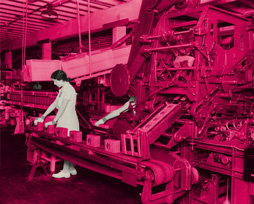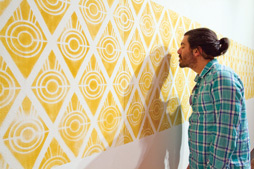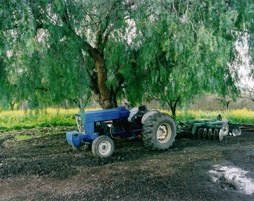[ Around the Table ]
In California, we take the subject of food especially seriously. Food is central to our history, our economy, our environment, our health, and our cultural identities. California produces over half of the fruits, vegetables, and nuts grown in the United States: agriculture here is a $43+ billion industry. And, from Alice Waters to Michael Pollan, California’s independent foodie entrepreneurs, artisans, and food activists have led the way for the nation. Food is a big business, a creative craft, and a cause on several fronts: unbelievably, right here amid the affluence of Silicon Valley, one of every four people remains at risk of hunger.
This exhibition looks “around the table” at food today through the work of 29 contemporary artists, among whom the subject has had growing importance. It revolves around three primary topics: healthful eating; food and community; and food issues. Seventeen artists have made new works (commissioned by SJMA) especially for this occasion, through which visitors can explore topics ranging from the histories of bread-making to mutagenic mint.
Imagine a lending library of seeds in the Museum café; curry wall paper; a living tree growing forty different varieties of stone fruits; organic vegetable beds in front of the Museum.
Matthew Moore grows crops on his family’s farm in Phoenix and is intrigued by the ways that consumer demand has altered the color, shape, and scale of the food we eat. In an installation created with the help of a 3-D printer, Moore delights in the unexpected, quirky, indeed sculptural shapes of carrots as they grow naturally. Such perfectly real but “imperfect” carrots never make it to market, given consumer preference for those that are strictly linear. For Robert Karimi, the ideal kitchen becomes a place in which the Museum’s visitors can discuss the nutritional and cultural values of food. A section of his kitchen will morph into a pedal-powered, low-rider taco cart, with which Karimi will perform at the opening reception on November 8 and at MACLA (Movimiento de Arte y Cultura Latino Americana) in San Jose on February 14, 2014.
Several artists recall the agricultural history of the Santa Clara Valley, once known as the “Valley of Heart’s Delight” for its abundant orchards and bountiful blossoming trees. The Los Angeles artists’ collective Fallen Fruit is designing wallpaper that echoes the history of San Jose’s fruit-canning industry. Chelsea Wills chronicles the transformation of the valley from agricultural to technological. Through interviews with families who immigrated from Japan, Portugal, China, and Vietnam, and whose farms are still in existence, Wills highlights the rich cultural and bio-diversity of the valley.


